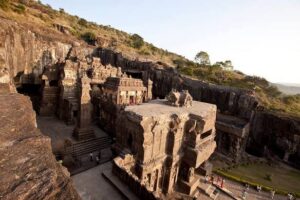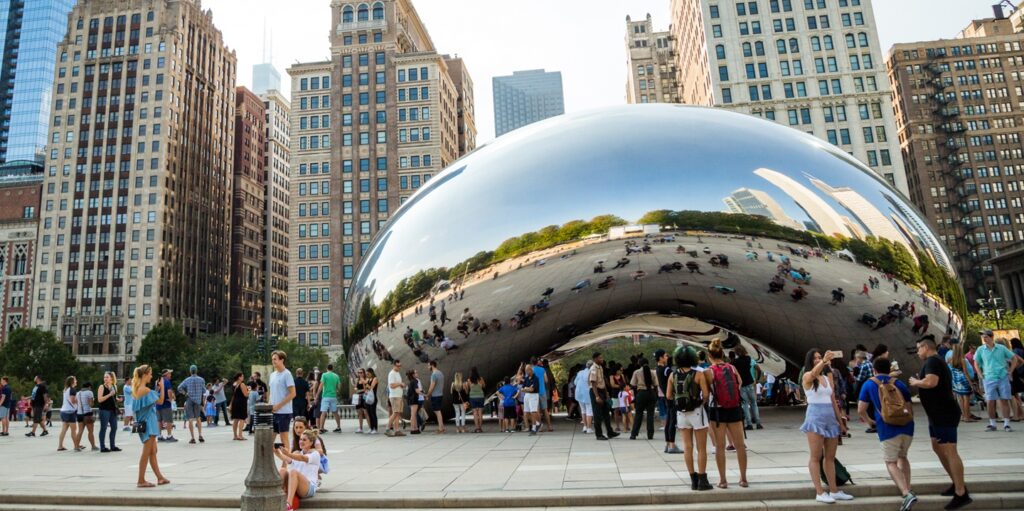Exploring religion, mythology and nature in Indian sculptures

‘Faces’ by Dhananjay Singh explores the idea of how nature is synonymous with humans beings (Photo: Dhananjay Singh)
One of the oldest art forms to exist, sculpture art has been a widespread practice since the Indus Valley Civilisation, when small terracotta figurines were first made, usually of women or animals. A significant way for historians to document life at the time, such as a war victory or a good deed, they have represented the various dresses and accessories worn, hairstyles adopted, musical instruments and weapons used over the centuries.
Historical legends behind illustrious sculpture caves
“Imagery has always been an integral and recognised part of art in Indian history as they are akin to historical documentation of our cultural past,” Monidipa Dey, an art historian from Kolkata, tells Media India Group.
Indian sculpture art also largely focuses on religious themes, with artists being enamoured by mythological stories of gods and goddesses and creating statues from historical epics and other literary works such as in Bhasa’s Pratima-Nataka, where images of dead royalties were made as objects of reverence and in Ramayana, when the god Rama kept his wife Sita’s golden idol by his side in her absence.
Dey mentions that the Kailashanathar temple in Kanchipuram boasts of many intricately carved figures, such as the Bhiksatana of Lord Shiva standing inside a devakulika or a niche in a shrine.
“The anatomy is almost perfect, the exquisitely carved figure showing Shiva in motion almost as if he is really walking, with his beautiful hairstyle and sandals,” says Dey.

The Ellora caves are a unique artistic creation consisting of 34 monasteries and temples(Photo: Bruno Poppe)
Some of the India’s most iconic sculpture sites are the Ellora Caves located in the Aurangabad district of Maharashtra, which is one of the largest rock-cut Hindu temple cave complexes in the world. The caves have deities from Hinduism, Buddhism and Jainism from the Rashtrakuta and Yadava dynasty, and represent the religious harmony and tolerance characteristic of ancient India.
Another example is Elephanta Caves, where the syncretic sculptures of Hindu and Buddhist ideas are hewn from solid basalt rock. Some of the most celebrated sculptures here are the Trimurti Sadashiva (three-faced Shiva), Nataraja (Lord of dance) and Yogishvara (Lord of Yoga). Both cave temples were declared as UNESCO World heritage sites in 1983 and 1987, respectively.
Dey has visited various museums and galleries that showcase a variety of sculptures from different regions and historical periods. She especially the unknown artists who have created Mathura art and the South Indian Chola Empire temple wall art.
“The Chandesanugrahamurti of Shiva in Brihadishwara temple is one of my favourites. These sculptures are not only a perfect mix of all the Rasas, a concept in Indian art that denotes aesthetic and emotional flavour, but they also bear uncanny resemblances to a living body, often making me feel as if they can walk out of their stone moulds,” adds Dey.

The Kailashanathar temple in Kanchi shows several statues adorned of Lord Shiva as Bhikshatana, a mendicant begging for alms (Photo: Viki Pandit)
The inspiration behind modern sculptors’ artwork
In fact, this distinctive realism and tactile nature is what attracts many contemporary artists to the medium. Dhananjay Singh, a sculptor from Bihar, has been practicing sculpture art since 1994. He started working with direct plaster and stone carving, eventually transitioning to welding techniques and materials like metal as he wanted to create juxtaposition and duality in his pieces.
“The three-dimensionality and myriad of materials that create different forms evoke a unique feeling in the artist as well as the audience,” Singh tells Media India Group.
As with all forms of art, modern-contemporary styles of sculpting are more representative of the artist’s self-expression or the issues of their time.
Ramkinkar Baij, born in 1906, was considered the “father of modern Indian sculpture” and was mentored by Rabindranath Tagore. Baij experimented with minimalism and geometric abstraction and in 1970, the Government of India recognised his talent artistry, commissioning him to create two colossal sculptures at the Reserve Bank of India headquarters in Delhi, for which he was awarded the Padma Bhushan.
British-Indian sculptor Anish Kapoor became prominent globally in 2006, when he created one of the most famous public sculptures in the world – the popular tourist attraction known as the “Bean” in Chicago’s Millennium Park.

The Cloud Gate (colloquially known as “the Bean”) in Chicago’s Millennium Park
Somenath Hore, born in 1921, another notable Indian sculpture artist, was influenced by communist and socialist ideas and created contorted bronze figurines that depicted the agonies of famine and war. Intriguingly, one of his biggest sculptures ‘Mother and Child’, a 40kg homage to the sufferings of Vietnam citizens during the war, was stolen on the very night it was completed and has never been recovered.
Singh focuses on the theme of the natural laws of creation, growth and decay in his artwork, and his is primary chosen medium for this is metal wire, which represents a unit of form like a cell or fibre and contrasts transparency with solid opacity in his art.
“The tree of life has been my principal source of inspiration and I find my own life experiences reflected in them,” says Singh.
His collection of magnificent sculptures titled “Faces” was made in stainless steel and bronze and explored the idea that plants, animals, humans and all elements of Earth are intertwined with each other, rather than a collection of isolated objects.
“There is nothing in nature that does not exist in us as well, which makes me feel a sense of belonging, of connectedness, to the cosmos as a whole,” he adds.
The future of contemporary sculpture
Singh says he has been lucky to receive support from connoisseurs of sculpture art throughout his career. His painstaking efforts have paid off; some of Singh’s recent pieces are auctioned upwards of INR 40,000, and his record was The Last Tree, which sold for USD 48,456.
However, some experts also believe that awareness about this art form should be increased. Dey credits this waning focus on iconography to the lack of study about sculptures in school textbooks or in the various events organised by different academic institutions and museums.
“Museums should hold regular exhibitions of the priceless sculptures they hold and highlight the history of those dynasties to create awareness and increase interest of the common people so they go and see India’s beautiful renditions, like the sculptures on old temple walls,” says Dey.
She asserts that the public should be made aware of such exhibitions with greater zeal, adding, “Without knowledge of all the arts, comprehending their influence on space and time will be impossible.”









